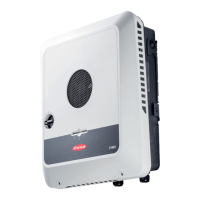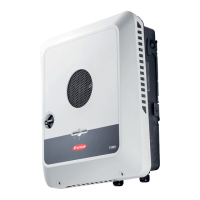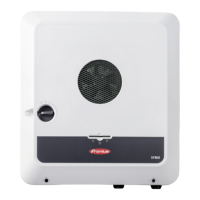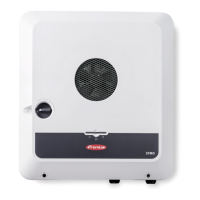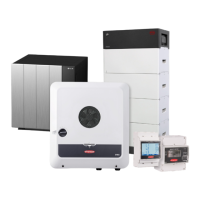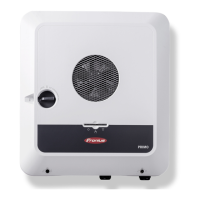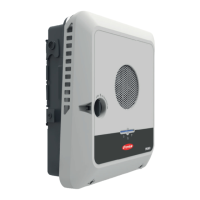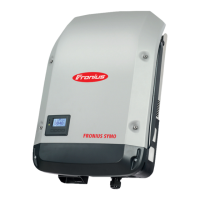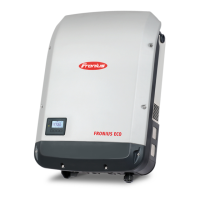Automatic switch to backup power including
backup power circuits and 3-pin separation, e.g.
Austria or Australia
Functions
-
Measuring and transferring the required parameters for energy management
and Solar.web by the Fronius Smart Meter.
-
Disconnecting from the public grid to enable operation in backup power
mode if the grid parameters are outside the country-specific standards.
-
Reconnecting to the public grid when the grid parameters are within the lim-
its specified by the country-specific standards.
-
Option of having a separate backup power circuit or several backup power
circuits that are supplied even during failure of the public grid. The total load
of the backup power circuits must not exceed the nominal output of the in-
verter. Furthermore, the performance of the connected battery must also be
considered.
Transitioning
from feeding en-
ergy into the grid
to backup power
mode
1.
The public grid is monitored by the inverter's internal grid and system pro-
tection unit and by the Fronius Smart Meter connected to it.
2.
Failure of the public grid.
3.
The inverter carries out the measures necessary according to the country
standard and then switches off.
Contactor K1 drops out. This disconnects the backup power circuits and the
inverter from the rest of the home network and from the public grid, as the
main contacts of contactor K1 open. The inverter activates relay K3, which
interrupts the supply to contactor K1. This prevents unintentional activation
of contactor K1 and thus a grid connection when voltage is restored in the
grid. The NC auxiliary contacts of contactor K1 send feedback to the inverter
that the contactor is open (a condition for starting backup power mode).
4.
The NO contact of relay K3 gives additional feedback to the inverter on
whether the locking was successfully performed by relay K3.
5.
The inverter decides based on the contactors' feedback as well as the meas-
urements on the inverter terminals and the Smart Meter that backup power
mode can be started.
6.
After all the required activation tests have been carried out, the inverter
starts backup power mode.
7.
All loads in the backup power circuits are supplied with power. The remaining
loads are not supplied with power and are safely isolated.
Transitioning
from backup
power mode to
feeding energy
into the grid
1.
The inverter is operating in backup power mode. Contactor K1 to the public
grid is open.
2.
Public grid available again.
3.
The Fronius Smart Meter monitors the grid parameters on the public grid
and passes this information to the inverter.
4.
The stability of the returned public grid is determined by checking the meas-
ured values of the Fronius Smart Meter.
5.
The inverter ends backup power mode and disconnects the outputs.
6.
The inverter deactivates K3. Contactor K1 is reactivated.
7.
All circuits are reconnected to the public grid and are supplied by the grid.
The inverter does not feed anything into the grid at this time.
8.
The inverter can start feeding energy into the grid again after performing the
grid checks required by the relevant standard.
47

